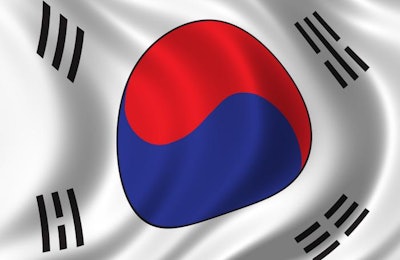
Poultry farmers in South Korea are describing the current measures in place to control the spread of highly pathogenic avian influenza (HPAI) as “excessive.”
They say that the number of birds culled is already approaching the total of 38 million that were lost in the last major outbreak (October 2016 – February 2017), which affected 340 premises. Furthermore, the current heavy toll has pushed up prices of poultry meat and eggs, which benefits only the importers.
In a statement cited by Yonhap, the Korean Federation of Sustainable Agriculture Organizations assert that the recent hike in the price of eggs was a direct result of a government direction to destroy healthy chickens from farms that are not infected. Since 2018, all poultry within three kilometers of a confirmed HPAI outbreak are destroyed in South Korea.
At the end of January, authorities announced a temporary suspension of import tariffs on eggs and egg product imports into South Korea. The move aimed to ensure adequate supplies.
As the agriculture ministry announced the number of confirmed HPAI outbreaks reached 89, the number of poultry culled in South Korea has now reached 27 million.
South Korea outbreak total approaches 90
In recent days, Yonhap has reported two confirmed outbreaks of HPAI linked to the H5N8 virus variant. First was at an egg farm with around 160,000 hens in Pocheon in Gyeonggi province. This farm is just 46 kilometers from the capital city, Seoul. One day later, a similar flock with 240,000 birds at Pyeongtaek in the same province tested positive for the virus. These premises are 46 and 70 kilometers, respectively, south of the capital city, Seoul.
Over the past week, the ministry has registered seven new HPAI outbreaks in poultry with the World Organisation for Animal Health (OIE). Presence of the H5N8 HPAI virus was confirmed at each of these locations, which covered five provinces.
Directly involving a total of 521,000 poultry, four of the affected flock were laying hens, which had all recorded an increase in mortality. Surveillance had revealed the infection at three duck farms before the birds showed symptoms.
Japanese prefecture projected to lose one in three hens to HPAI
Just to the east of Tokyo, Chiba prefecture is projected to lose one-third of its laying hens to HPAI, reports Nippon. This equates to around 4.3 million birds.
The forecast followed confirmation of the eighth HPAI outbreak in the prefecture. Around 250,000 poultry in the Sosa city region will be culled.
Previously, Japan Times reported two new HPAI outbreaks. One of these was also in Chiba, and resulted in the culling of 1.15 million poultry in the town of Tako. On the western island of Miyazaki, the number of outbreaks rose to 11. Around 240,000 chickens were scheduled for culling earlier this month after some tested positive for the virus. The infected premises was located just 500 meters from a previous outbreak confirmed at the end of January.
Over the past week, Japan’ agriculture ministry has registered with the OIE that five wild birds at four locations tested positive for the H5N8 HPAI virus in the period January 18-27.
View our continuing coverage of the global avian influenza situation.















